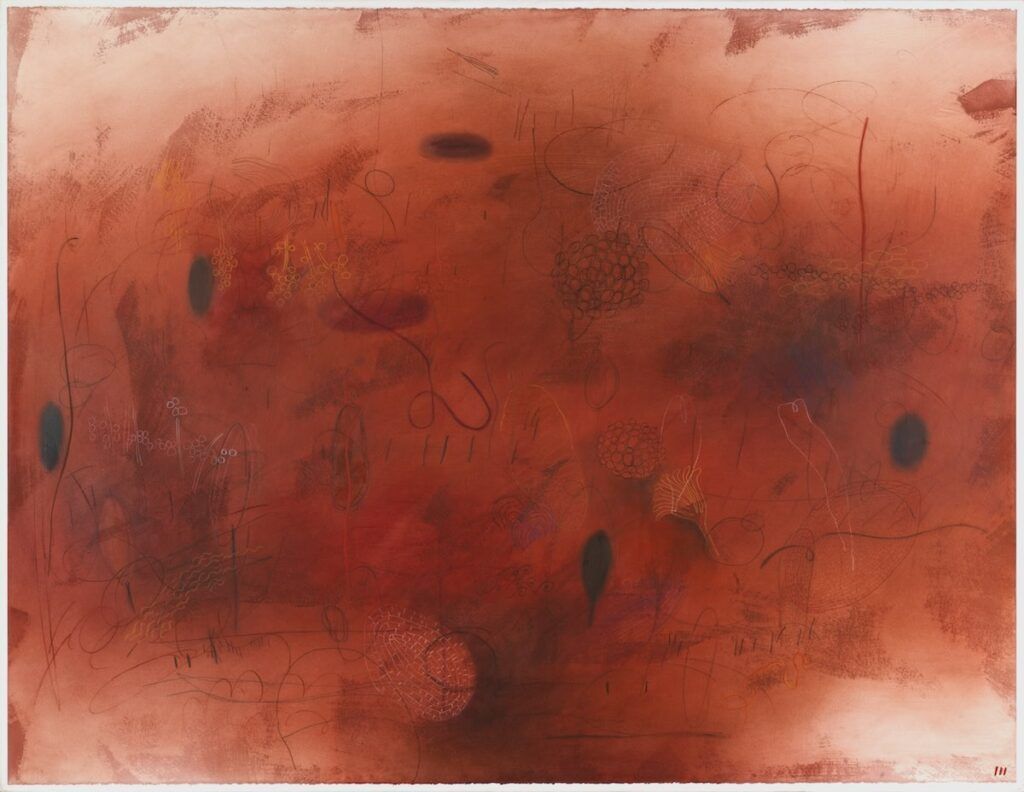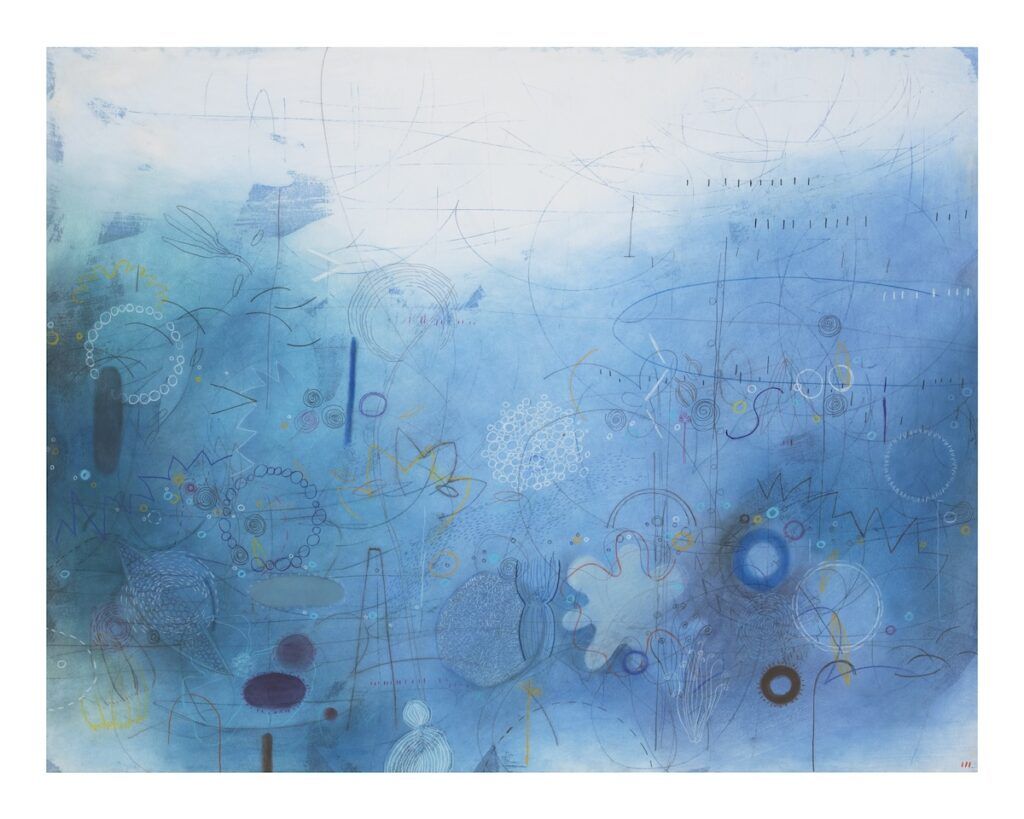In March of 2023, The National Gallery of Art, in Washington D.C., announced the acquisition of Fog Bank (2020), a mixed-media work by the highly respected Native American artist Emmi Whitehorse (Diné, b. 1957). It’s the first work by this artist to join the collection, part of a belated but welcome trend among museums and cultural institutions to address the lack of representation in their archives of contemporary Native artists.
Subscribe to Artists Magazine now so you don’t miss any great art instruction, inspiration, and articles like this one.
National Gallery of Art, Washington, William A. Clark Fund, 2022.41.1
A Mix of Materials
Whitehorse was born in New Mexico, a member of the Navajo Nation, and grew up in a family where only the Navajo language was spoken. Rather than pursue a traditional, informal, craft-oriented approach usually associated with Native creators, Whitehorse sought a formal art education at the University of New Mexico where she earned both a BFA and MFA with a focus on printmaking and art history. The fact that printmaking usually requires paper rather than canvas as its base may explain why Whitehorse is more comfortable working on paper, which she then mounts on canvas. Working on paper also provides a bit more flexibility in being able to rotate the work around on a flat surface as she applies the richly saturated color. There’s no correct top or bottom to her work, a strategy that’s meant to avoid, as Whitehorse says, “the Western tendency to schematize.”

The process Whitehorse used to create Fog Bank is in line with her general practice. She uses her hands to scrub in the first layer of powdered pastel pigment, virtually embedding it into the paper, giving the surface an atmospheric, ethereal quality. This is then sprayed with a fixative. In addition, she uses brushes to apply a turpentine wash and a thinned oil stick application. Sometimes, as in this piece, Whitehorse works on two, side-by-side sheets of paper. Each work seems to have a single dominant color aura. In Fog Bank a crystalline blue epitomizes the misty melding of sea and sky. On top of her radiant surfaces, the artist draws marks and shapes with Conté pencils and Conté chalk. Whitehorse has described these forms as an “intricate language of symbols [that] refer to specific plants, people and experiences.”

39 1/2 x 50) by Emmi Whitehorse.
Garth Greenan Gallery, New York, NY
Thinking About What is Underfoot
In the artist’s statement about her work at the Tamarind Institute, a well-respected collaborative printmaking workshop, Whitehorse says: “My work is about, and has always been about, land—about being aware of our surroundings and appreciating the beauty of nature. I am concerned that we are no longer aware of those things. I hope that the calm and beauty in my work serves as a reminder of what is underfoot, of the exchange we make with nature. Light, space, and color are the axis around which my work evolves. The act of making art must stay true to a harmonious balance of beauty, nature, humanity, and the whole universe. This is in accordance with Navajo philosophy.”
About the Artist
Garth Greenan Gallery, in New York City, represents the work of Emmi Whitehorse and several other important Native artists. Whitehorse has had solo exhibitions at major institutions like the Jocelyn Art Museum and the Tucson Museum of Art. Her work has been featured in group exhibitions at the National Museum of the American Indian, the Virginia Museum of Fine Arts, and the Denver Art Museum. Her work is represented in numerous public collections, including the Brooklyn Museum of Art, Crystal Bridges Museum of American Art, and the Whitney Museum of American Art.
Enjoying this article? Sign up for our newsletter!
